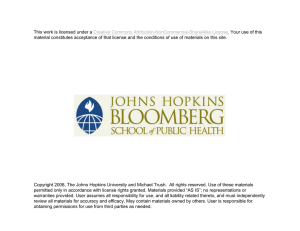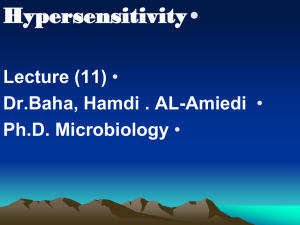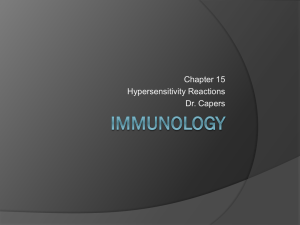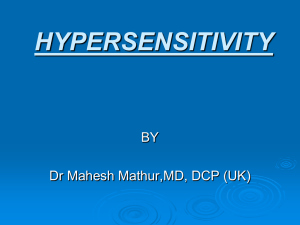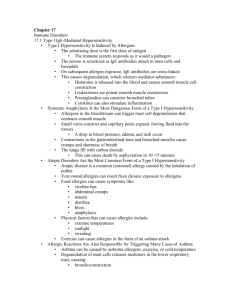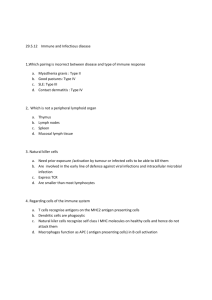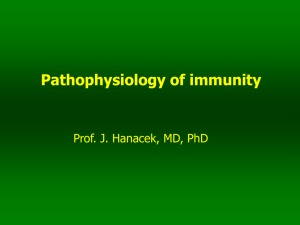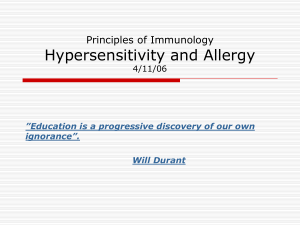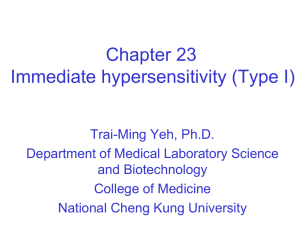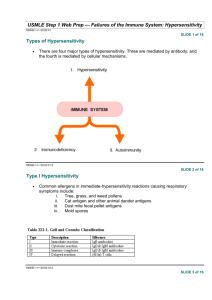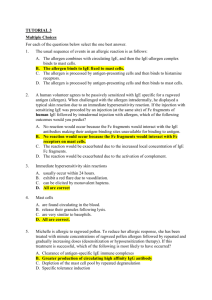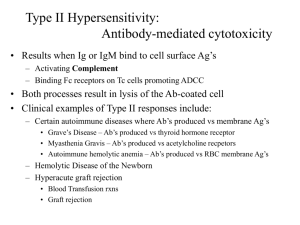Four Types Hypersensitivity: Proposed by Coombs and Gell
advertisement
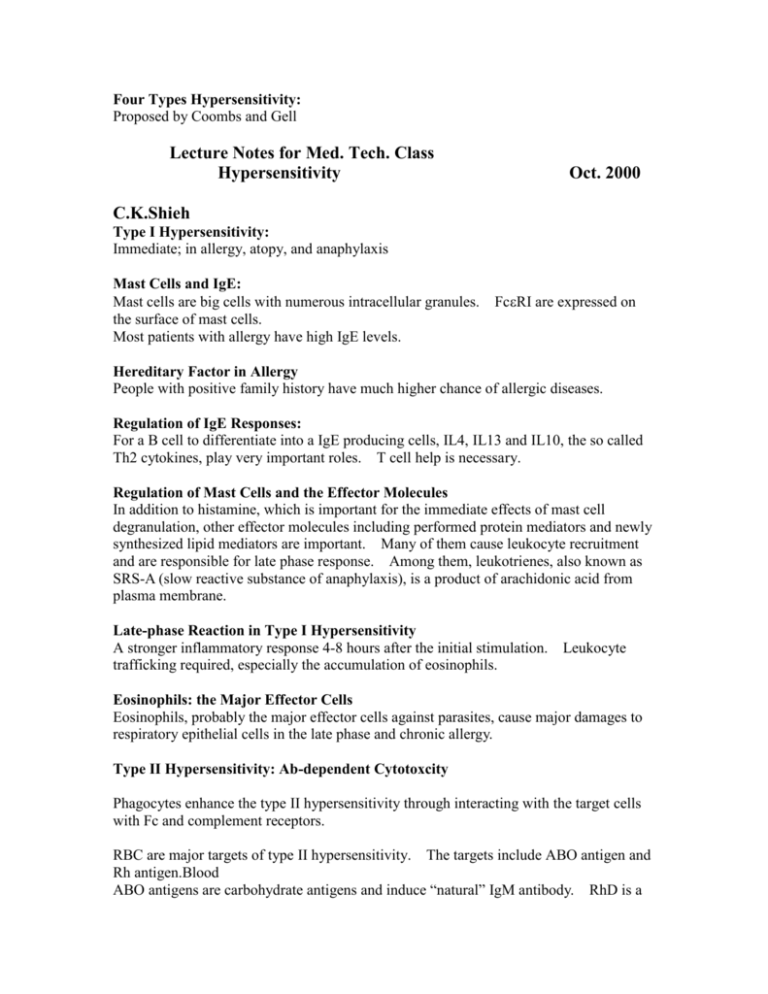
Four Types Hypersensitivity: Proposed by Coombs and Gell Lecture Notes for Med. Tech. Class Hypersensitivity Oct. 2000 C.K.Shieh Type I Hypersensitivity: Immediate; in allergy, atopy, and anaphylaxis Mast Cells and IgE: Mast cells are big cells with numerous intracellular granules. the surface of mast cells. Most patients with allergy have high IgE levels. FcRI are expressed on Hereditary Factor in Allergy People with positive family history have much higher chance of allergic diseases. Regulation of IgE Responses: For a B cell to differentiate into a IgE producing cells, IL4, IL13 and IL10, the so called Th2 cytokines, play very important roles. T cell help is necessary. Regulation of Mast Cells and the Effector Molecules In addition to histamine, which is important for the immediate effects of mast cell degranulation, other effector molecules including performed protein mediators and newly synthesized lipid mediators are important. Many of them cause leukocyte recruitment and are responsible for late phase response. Among them, leukotrienes, also known as SRS-A (slow reactive substance of anaphylaxis), is a product of arachidonic acid from plasma membrane. Late-phase Reaction in Type I Hypersensitivity A stronger inflammatory response 4-8 hours after the initial stimulation. trafficking required, especially the accumulation of eosinophils. Leukocyte Eosinophils: the Major Effector Cells Eosinophils, probably the major effector cells against parasites, cause major damages to respiratory epithelial cells in the late phase and chronic allergy. Type II Hypersensitivity: Ab-dependent Cytotoxcity Phagocytes enhance the type II hypersensitivity through interacting with the target cells with Fc and complement receptors. RBC are major targets of type II hypersensitivity. The targets include ABO antigen and Rh antigen.Blood ABO antigens are carbohydrate antigens and induce “natural” IgM antibody. RhD is a peptide antigen and often causes hemolytic disease of the newborn in RhD(-) mothers. Coombs’ Test for anti-RBC Antibodies Direct Coombs’ test: testing Ab on patients’ RBC. Indirect Coombs’ test: testing anti-RBC Ab in patients’ serum. Type III Hypersensitivity: Immune Complex Disease In normal conditions, small amount of immune complexes are cleared by RBC in cooperation with complements. Complement receptors (CR1) on RBC are effective in picking up the immune complexes and deliver them to the liver to be cleared. Without RBC, complements can solubilize small amount of immune complexes. Immune complexes in the circulation will accumulate in the blood vessels of kidney, joints, etc and cause tissue damages. A typical skin appearance of immune complex accumulation: Arthus reaction (Fig. 25.9-2) Type IV Hypersensitivity: cell mediated immune responses Sensitization and Elicitation Phases of Type IV HypersensitivityLangerhans cells and keratinocytes both are active participants in the induction phase of type IV hypersensitivity. Leukocyte trafficking of 1. antigen presentation cells, 2. sensitized lymphocytes, and 3. recruited inflammatory cells are important for the type IV immune responses. Typical type IV responses: Contact dermatitis Tuberculin (PPD) induced skin response Granuloma reaction to bacteria and chemicals.
